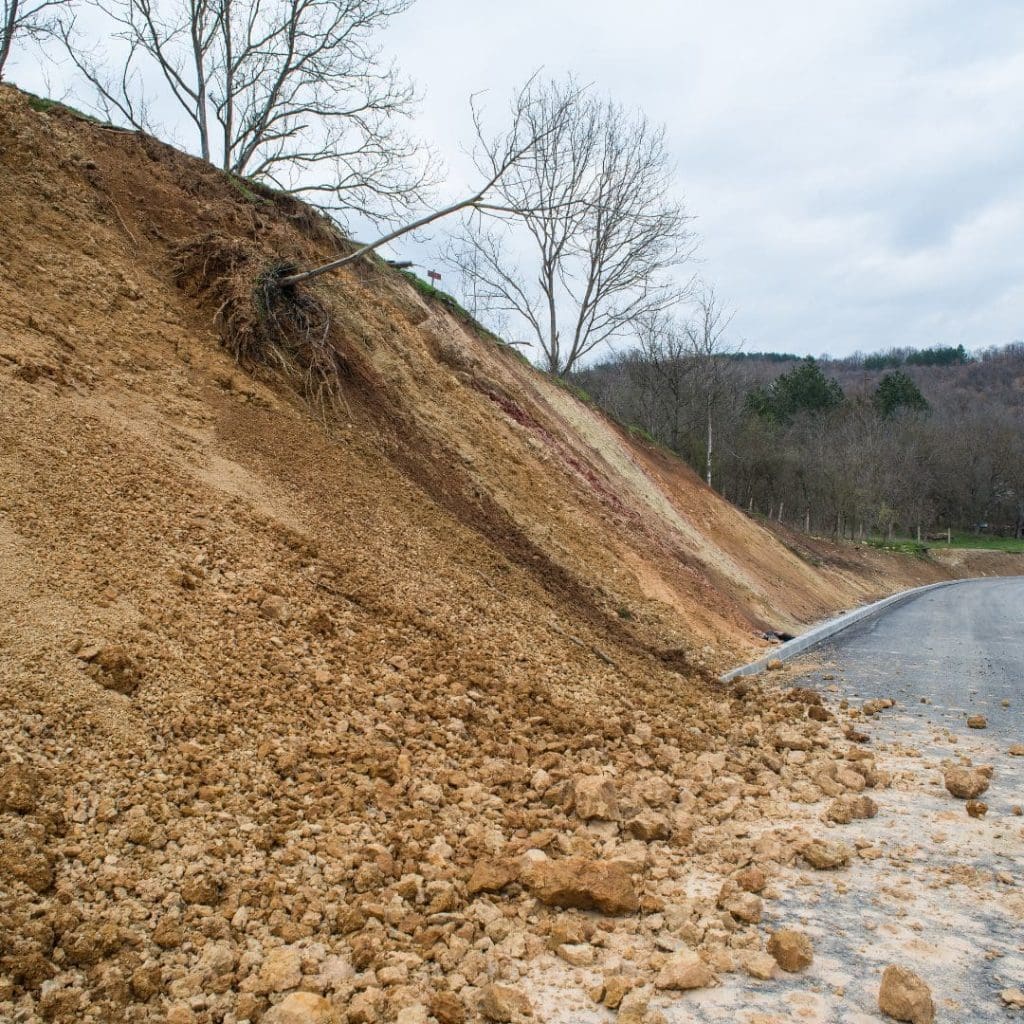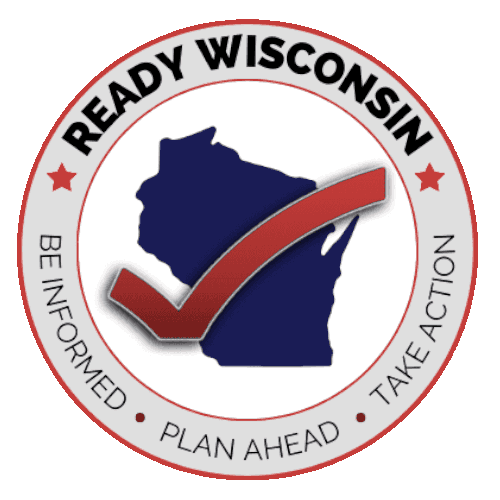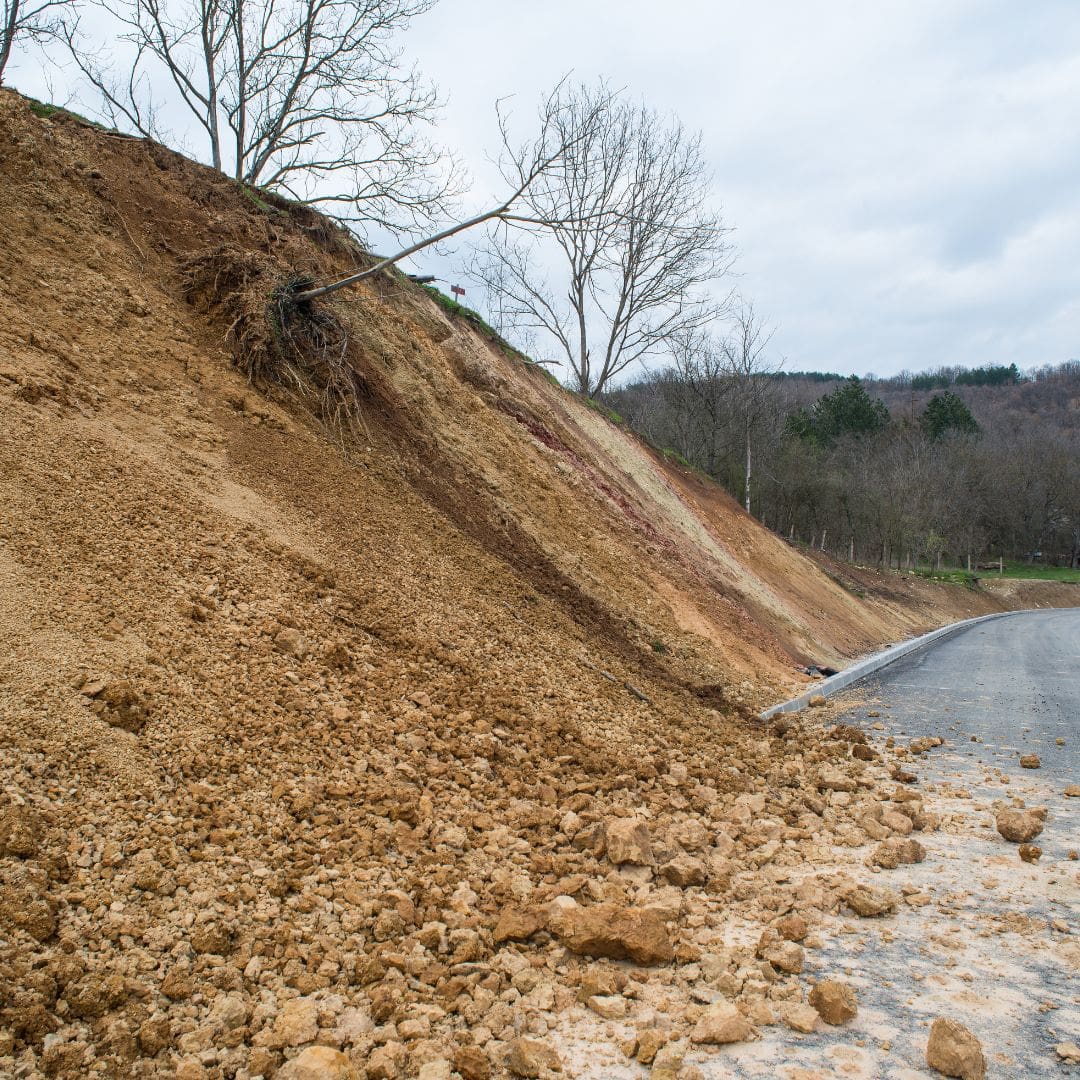Landslides occur when masses of rock, earth, or debris move down a slope. Heavy rains, snowmelt, erosion, building construction, and land use changes are some of the contributing factors to landslides. They often occur with other major natural disasters, such as flooding or wildfires.
In Wisconsin, the hilly terrain adjacent to the Mississippi River in the Southwest region is especially prone to landslides. Landslides can also occur along Wisconsin’s Great Lake coasts. However, almost any steep or rugged terrain can be susceptible to landslides in the right conditions.
Landslide Terms to Know
Debris Flow
These are sometimes referred to as mudslides. They are fast-moving landslides that destroy objects in their path, and often strike without warning. Debris flows generally occur during periods of intense rainfall or rapid snowmelt. They can carry large items such as boulders, trees, and cars. Areas recently burned by wildfires are especially susceptible to debris flows.
Rock Falls
These are abrupt, downward movements of rock or earth that detach from steep slopes or cliffs. Boulders can bounce or roll great distances and damage structures or kill people.
Landslide Warning Signs
- Springs, seeps, or saturated ground in areas that have not typically been wet before
- New cracks or unusual bulges in the ground, street pavements, or sidewalks
- Soil moving away from foundations
- Structures such as decks and patios tilting and/or moving relative to the main house
- Tilting or cracking of concrete floors and foundations
- Broken water lines and other underground utilities
- Leaning telephone poles, trees, retaining walls, or fences
- Offset fence lines
- Sunken road beds
- Rapid increase in creek water levels
- Sudden decrease in creek water levels though rain is still falling
- Sticking doors and windows, and visible open spaces indicating jambs and frames out of plumb
- A faint rumbling sound that increases in volume as the landslide nears
- Unusual sounds, such as trees cracking or boulders knocking together, might indicate moving debris.
Protecting Yourself…
…Before a Landslide
- Consider your building site. Do not build near steep slopes, close to cliff edges, near drainage ways, or natural erosion valleys.
- Contact Experts. Contact local officials, state geological surveys, or county planning department. They could inform you if landslides or debris flows have occurred previously in your area.
- Develop an emergency plan. Learn about the emergency response and evacuation plans for your area. Develop your own emergency plan for your family or business.
- Get a ground assessment of your property. A geotechnical professional will give you advice on appropriate preventative and protective measures for your home.
- Talk to your insurance agent. Debris flow may be covered by flood insurance policies from the National Flood Insurance Program.
…During a Landslide
- Stay informed. Listen to a NOAA Weather Radio or local news station on a battery-powered radio for warnings of intense rainfall.
- Consider leaving. If you are in areas susceptible to landslides, consider leaving if it is safe to do so. Remember, driving during an intense storm can be dangerous. If you remain at home, move to a second story if possible.
- Listen. Listen for any unusual sounds indicating moving debris, such as trees cracking or boulders knocking together. A trickle of falling debris or mud may precede larger landslides. Be aware that by the time a debris flow is coming, it will be too late to get away safely. Never cross a road with water or mud flowing over it.
- Be Alert. Roads may become blocked or closed due to collapsed pavement or debris.
- Avoid river valleys and low-lying areas. If you are near a stream or channel, be alert for any sudden increase or decrease in water flow or water that changes from clear to muddy. These can be signs a landslide is coming.
- Inform your neighbors. Your neighbors may not be aware of potential hazards. Help neighbors who may need assistance to evacuate.
- If escape is not possible. Curl into a tight ball and protect your head.
…After a Landslide
- Stay away. Stay away from the slide area, there may be additional slides.
- Watch for flooding. Floods sometimes follow landslides and debris flows because they may both be started by the same conditions.
- Check for people. Look for injured and trapped people near the slide, without entering the direct slide area. Direct rescuers to their locations.
- Report damages. Report broken utility lines and damaged roadways and railways to appropriate authorities. Reporting potential hazards will get the utilities turned off as quickly as possible, preventing further hazards and injuries.
- Get professional inspections. Allowed trained professionals to check the building foundation, chimney, and surrounding land for damage. Get geotechnical experts for evaluating hazards or designing corrective techniques to reduce landslide risk. A professional can advise you of the best ways to prevent or reduce landslide risk, without creating further hazard.


